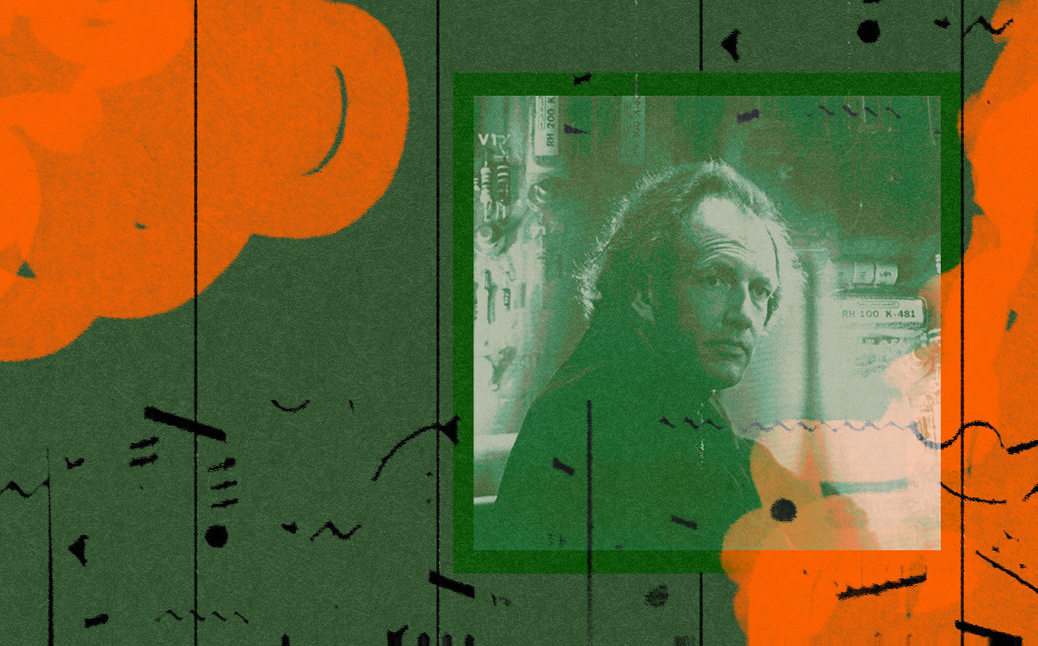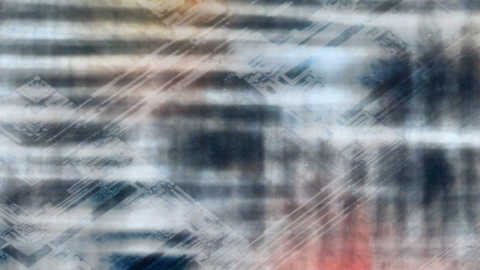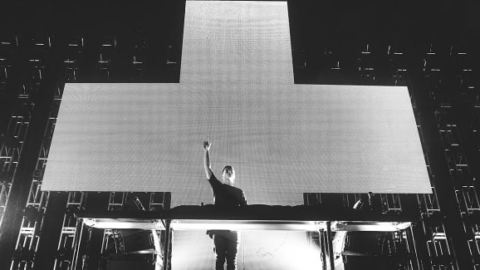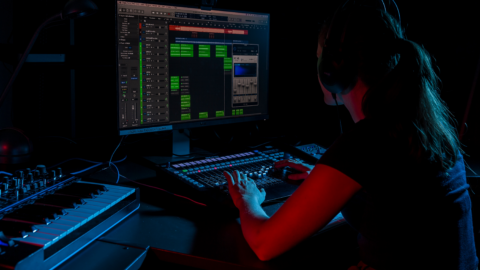No matching results
Try a different filter or a new search keyword.
Search all Bandcamp artists, tracks, and albums
The Dutch composer Roland Kayn occupies a somewhat liminal space in experimental electronic composition. Having worked in a variety of legendary early electronic studios, most notably Utrecht’s Institute of Sonology, Kayn was operating in the same world as well-known composers such as Karlheinz Stockhausen and Luigi Nono. Yet, his work sounds nothing like theirs, and his rejection from that same world of composers cast him into relative obscurity. His music was rarely performed, and much of it went unreleased during his lifetime. But for the last two years, an ongoing project has uncovered large swathes of Kayn’s unreleased material, and thanks to the efforts of his daughter Ilse, there may now be more available recordings of Kayn’s music than many other composers of his era. Yet still, Kayn remains shrouded in mystery.
The reissue project began with the release of the gargantuan 16-disc boxset A Little Electronic Milky Way of Sound on the Finnish label Frozen Reeds in 2017. The piece, which runs for nearly 14 hours, was arduously restored from its original tapes by musician and engineer Jim O’Rourke, who refused to be paid for his work. As it turns out, this was just the tip of the iceberg; O’Rourke had been working on restorations of Kayn’s music for the last five years. Two years after Milky Way, another monolithic work, titled Scanning, was released as a 10-CD boxset. “That was really one of the holy grail works,” says Ian Fenton, who runs Frozen Reeds. “But then there were all these other pieces, and I think it would have been incredibly unwieldy to put out all of his work in a physical form.” Fenton came up with the idea of releasing the works via Bandcamp in 2017. As of this writing, 27 of Kayn’s pieces have been uploaded to Bandcamp; even at this rate, according to Ilse, it will still take another 20 years for his complete archive to be published.
While Kayn’s music may have originated from the same studios that birthed experimental electronic music, Kayn’s pieces always stood out. The works of composers like Luc Ferrari and Bernard Parmegiani are full of dramatic shifts and progressions, but Kayn’s music feels as though it has no beginning, middle, or end. “When I first heard his stuff, I was in college,” O’Rourke says. “What composition professors teach you, especially in New Music and Classical Music, is that form is everything—it’s thought of as a large overriding structure that is always forefront in the way that you listen. But when I first heard Tektra [Kayn’s most well-known work], it was the first thing that was a compelling argument against that way of thinking. Because the form was on a micro level. Everything is happening simultaneously and continuously. It was complete abstraction. Kayn had no interest in the ideas that can be expressed through representation whatsoever. The representation comes from the birth that you’re witnessing in the act of listening.”
Musically, Kayn’s work has more in common with contemporary experimental artists such as Rafael Toral, Kassel Jaegar, and O’Rourke himself than any of the academic composers with whom he shared space, which could explain his rejection. But even considering all of the music that has been made in his aftermath, Kayn still has no real contemporaries. The music is a galaxy of its own, out of our reach and nearly impossible to fully comprehend. But just as the recent James Webb telescope images have allowed us to better visualize the beauty of distant solar systems, the expansion of Roland Kayn’s back catalog allows us to appreciate the stunning breadth of his work.
Kayn referred to his work as “cybernetic music,” entailing a system of communication and feedback between the input of the composer and the electronic devices that create the music. This process grants particular importance to the compositional process within the music itself. The Man and the Biosphere, the first of his Bandcamp releases, reflects this sound practice with a recurring theme of clockwork-like sounds and rhythms that repeatedly slow down and speed up. This effect creates a sense of unresolved propulsion, fitting for a composer whose music tends to feel as if it distorts the fabric of time itself.
This piece, composed in 2002, reflects a period of renewed artistic drive following a near-fatal aneurysm. The subject of this requiem—the only one Kayn ever composed—was Patrice Lumumba, the first prime minister of the Democratic Republic of Congo, who was assassinated during a U.S. and Belgium-backed military coup. Whereas Kayn’s other works tend to evoke space and the unknown, Requiem pour Patrice Lumumba is completely desolate and haunting. The piece makes clear that Kayn’s interest in cybernetics and technological aspects of music never came at the expense of his concern for humanity and injustice.
The title of this piece refers to Kayn’s practice of taking sound material from earlier in his career and recontextualizing it, a practice that both Fenton and O’Rourke cited as having shifted their perception of Kayn’s work. “He continuously came up with new ways of looking at basically the same source material over and over again,” O’Rourke says. Fittingly, the piece’s controlled bursts of noise call to mind the work of contemporaries such as Pierre Henry. Kayn’s ability to thread fragments from different eras of his career into a cohesive whole was, and remains, unmatched.
Sound-Hydra, realized in 2001, is perhaps one of the best examples of the endlessly-shifting nature of Kayn’s compositions. Clocking in at over two hours, the piece is every bit as complex as the nine-headed creature for which it is named. The music pans from what sounds like piercing manipulated strings to blasts of noise and warped found sounds. In this piece, like many of Kayn’s compositions, musical fragments which easily could have been the basis for an entire piece are often, within seconds of coming into the fold, whisked away into his stratosphere of sound.
This piece, fittingly released in November 2020, clocks in at less than 22 minutes, making it uncharacteristically short for Kayn’s oeuvre. Kayn’s work often subtly transitions from beautiful, shimmering ambiance to dark, spacious doomscapes. Of all of Kayn’s compositions, November Music feels the most centered around his ambient side, albeit with plenty of alien moments along the way. The piece includes melodic and rhythmic elements that sound as though they’re playing in reverse, almost calling to mind the glitchy sound world of Fennesz. Despite its length, November Music is no more lacking in scope than Kayn’s other compositions.
Released in 2003, A Pan-Air Music is both one of Kayn’s most drone-centric pieces and one of his most dynamic. The deeply textural piece shifts from Eno-like ambiance to echo-laden, drum machine-driven segments that call to mind Tangerine Dream. But when asked if her father’s later work was influenced by any of the sweeping developments in electronic music during the latter half of the 20th century, Ilse’s answer was a resounding “no.” “He was solo,” she says. “He made his cybernetic music. He said he invented the term, and he was a pioneer.”
The most recent of Kayn’s releases positions him as one of the preeminent proto-noise artists of his time. Abstracta clatters and clangs with the sonority of a pinball machine warping into cyberspace. The album notes compare the piece to free improvisation, and though Kayn was a composer through and through, he was also a member of one of the formative improvised music groups, Gruppo d’Improvvisazione Nuova Consonanza. Kayn’s notion of cybernetic music connects with free improv in that it centers the process of music, whether in its creation or in the listening.













